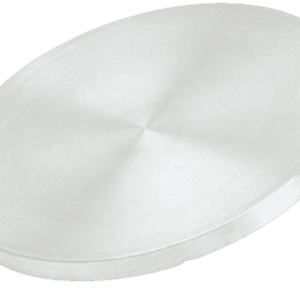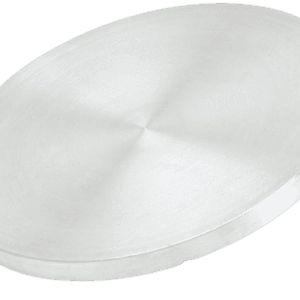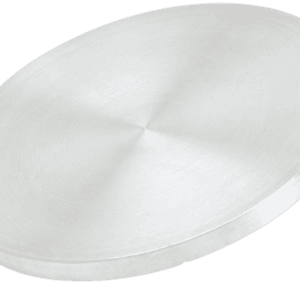Cesium Fluoride Sputtering Target
Introduction
Cesium Fluoride (CsF) Sputtering Target is a high-purity fluoride material widely used in thin film deposition for optoelectronic, optical, and semiconductor applications. With its wide bandgap, strong ionic bonding, and transparency across UV, visible, and IR ranges, CsF is particularly valuable in optical coatings, electron emission layers, and advanced research applications.
Detailed Description
The Cesium Fluoride Sputtering Target is manufactured from refined, high-purity CsF powder, consolidated through cold pressing and sintering or vacuum melting to achieve dense, uniform targets. The resulting material provides stable sputtering performance and high-quality thin films with low contamination levels.
Chemical Formula: CsF
Purity: Available in 99.9% (3N) and 99.99% (4N) grades.
Appearance: White crystalline solid, hygroscopic in nature (requires careful storage and handling).
Shapes & Sizes: Circular (25–300 mm), rectangular, and custom designs with thicknesses from 3–6 mm.
Bonding Options: Indium or elastomer bonding to copper/titanium backing plates for enhanced heat transfer and mechanical stability.
Applications
Cesium Fluoride sputtering targets are used in:
Optical Coatings – Anti-reflective and beam-splitting coatings in UV/IR devices.
Semiconductors & Electronics – Insulating and dielectric layers in thin film devices.
Photovoltaics – Electron emission and transport layers in solar cell technologies.
Research & Development – Advanced thin film studies in material science and photonics.
Technical Parameters
| Parameter | Typical Value / Range | Importance |
|---|---|---|
| Purity | 99.9% – 99.99% | High purity ensures stable sputtering and film performance |
| Diameter | 25 – 300 mm (custom) | Matches industry-standard sputtering systems |
| Thickness | 3 – 6 mm | Influences sputtering stability and deposition rate |
| Bonding | Copper / Titanium backing | Improves thermal conductivity and structural stability |
Comparison with Related Materials
| Material | Key Advantage | Typical Application |
|---|---|---|
| Cesium Fluoride (CsF) | Wide bandgap, high transparency | Optical & electronic coatings |
| Lithium Fluoride (LiF) | High UV transmission | UV optics, AR coatings |
| Calcium Fluoride (CaF₂) | High laser damage threshold | Laser optics, IR windows |
FAQ
| Question | Answer |
|---|---|
| Can CsF targets be customized? | Yes, size, thickness, and bonding can be tailored for specific sputtering systems. |
| What is the standard lead time? | Typically 2–3 weeks depending on specifications and order size. |
| Is CsF hygroscopic? | Yes, it absorbs moisture and should be stored in a dry, vacuum-sealed environment. |
| How is it packaged? | Vacuum-sealed with desiccants, cushioned with protective foam, and shipped in export-safe cartons or crates. |
| Which industries use CsF targets most? | Optics, semiconductors, solar energy, and R&D laboratories. |
Packaging
Cesium Fluoride Sputtering Targets are vacuum-sealed with moisture-proof barriers to prevent degradation during storage and transport. Each target is individually labeled and shipped in foam-protected, export-grade cartons or wooden crates for safe delivery.
Conclusion
Cesium Fluoride Sputtering Targets provide excellent transparency, high purity, and reliable sputtering performance, making them ideal for thin film deposition in optical, electronic, and photovoltaic applications. With customizable dimensions, purity levels, and bonding options, they are a dependable solution for both industrial production and advanced research.
For detailed specifications and a quotation, please contact us at [sales@thinfilmmaterials.com].





Reviews
There are no reviews yet.